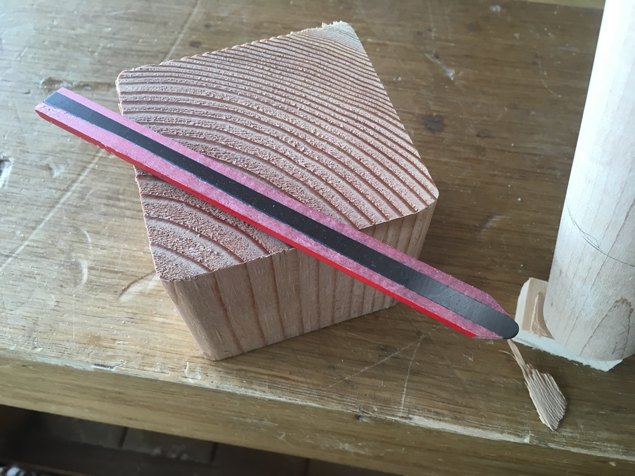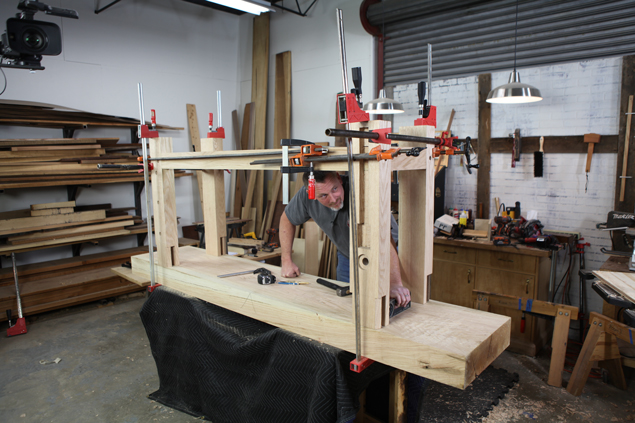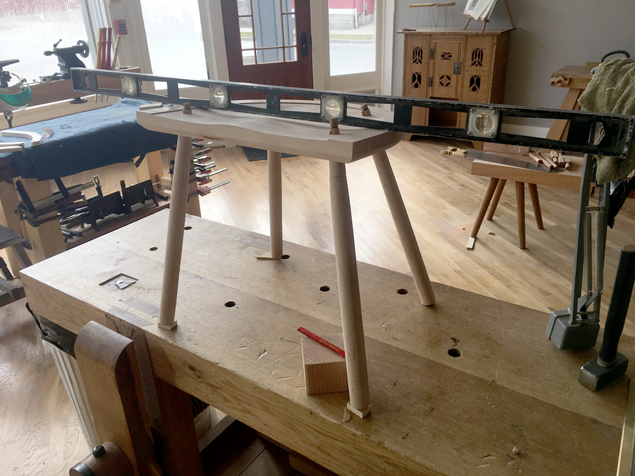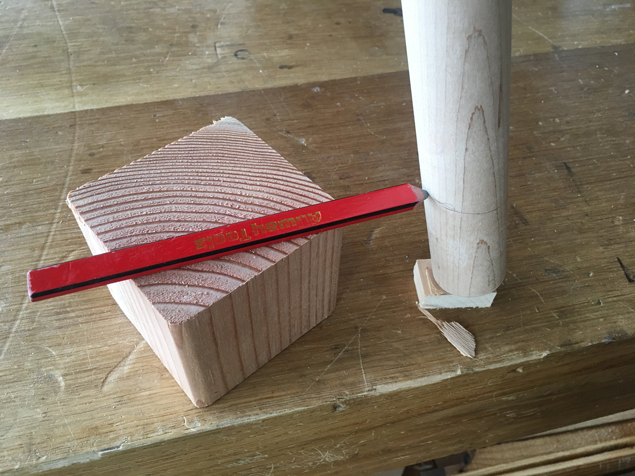We may receive a commission when you use our affiliate links. However, this does not impact our recommendations.
Carpenter’s pencils have limited uses in a furniture shop, but when I encountered the “half-pencil” years ago I started hoarding carpenter’s pencils to transform them into half-pencils for my friends.
The half-pencil, as its name implies, is a carpenter’s pencil that has been planed down to half its thickness. (Using a carpenter’s pencil makes it easier to plane it down and it gives you more bearing surface in use than a school pencil.)
What’s it good for? Transferring marks from one surface to another without any worry that the pencil line will wander. Consider tracing around a wooden pattern to the wood below. With a mechanical or school pencil, you have to tilt the pencil to ensure the lead marks exactly at the intersection of the pattern and the wood. It’s easy for the lead to slip under the pattern or wander away from it.
With the half pencil you put the lead right on the pattern. You can’t miss.
Another fantastic use for the half-pencil is when transferring large tenons to the areas that will be mortised, such as when cutting the mortises for a massive Roubo benchtop. The half-pencil also goes places a knife won’t and accurately traces the shape of the tenon and the dovetail on the underside of the benchtop. Even if the lead is dull, you are in great shape because you are looking to cut away the wood inside the lead line.
(Side note: After I mark out the joints for this bench, I come back with the iron of my block plane. I place the flat back of the iron flat on the joint and trace around the tenon and the dovetail. This gives me both a pencil line (for my aging eyes) and a knife line (for my tools).)
The half-pencil is also ideal for marking out the final lengths of chair legs before cutting them down. As shown in the photo above, I first level the chair’s frame on the benchtop, propping up the legs to get the chair canted just the way I want.
Then I cut a 4×4 to length that represent the amount I want to saw away from the bottom of the legs. I place the 4×4 on the benchtop and put the half-pencil on top of it. Then I can easily mark the chair legs all around.
Yes, I know there are ways around all the above situations. I explored them. The half-pencil makes these tasks a cinch. Give it a try – I bet you have an unused carpenter’s pencil in your tool chest somewhere.
— Christopher Schwarz
P.S. For those who think the graphite in the pencil will dull your plane blade, I just want to say…. uh… I best not. And ditto for those who think the graphite will interfere with finishing.
Here are some supplies and tools we find essential in our everyday work around the shop. We may receive a commission from sales referred by our links; however, we have carefully selected these products for their usefulness and quality.













Coating the bottom with shellac would probably make it a lot less messy in tool boxes, and wouldn’t interfere with functionality
The graphite won’t hurt your plane blade, but I found out the hard way that it is conductive, and will trip the blade lock on a Sawstop tablesaw!
I’ve had decent luck with the Swanson Always Sharp Refillable Carpenter Pencil. They are so good that they keep disappearing from the shop. I suspect they find a visitor’s pocket to walk out it.
what is the best way to make pencil? sand, knife bow saw?
This looks hip. I use the Hock Tools big fatty 3/4″ marking knife the same way. No handle on it so it’s just a big hunk o flat steel.